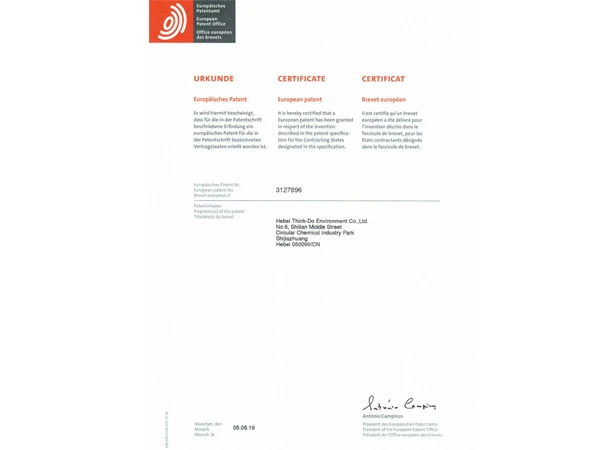
News
Nov . 21, 2024 16:44 Back to list
lead chelator
The Role of Lead Chelators in Heavy Metal Detoxification
Lead poisoning has been a pressing public health concern for decades, especially in urban areas where industrial contamination and old infrastructure can exacerbate exposure risks. Lead, a toxic heavy metal, accumulates in the body over time, leading to serious health complications, including neurological damage, increased blood pressure, and developmental issues in children. One of the most effective strategies for combating lead toxicity is through the use of lead chelators.
Understanding Chelation Therapy
Chelation therapy is a medical procedure that involves the administration of chelating agents—substances that can bind to metal ions—in order to remove them from the body. Chelators work by forming a stable complex with the metal ion, making it more soluble and easier for the body to excrete through urine. This process not only reduces the body’s lead burden but also mitigates the associated health risks.
Common Lead Chelators
Several chelating agents are used in clinical settings to treat lead poisoning. Among the most well-known is EDTA (ethylenediaminetetraacetic acid), a synthetic compound that has been widely utilized for its effectiveness in binding heavy metals. Another chelator, dimercaprol (often referred to as BAL), is especially effective for acute cases of lead poisoning. Additionally, DMSA (dimercaptosuccinic acid) has gained popularity due to its oral bioavailability and relative safety profile, making it suitable for outpatient treatment.
Mechanism of Action
Lead chelators function by binding to lead ions in the bloodstream. Once the chelator binds to lead, the complex formed is more water-soluble than lead alone, allowing the kidneys to effectively filter and eliminate it from the body. This binding mechanism is critical because it reduces the free lead concentration in the body, which is responsible for many of the toxic effects.
lead chelator

Indications for Use
Chelation therapy is indicated in cases of acute lead poisoning, characterized by symptoms such as abdominal pain, vomiting, or neurological disturbances. Additionally, it is used when blood lead levels exceed recommended thresholds, particularly in children, who are more vulnerable to lead’s harmful effects. The therapy is administered with caution, following comprehensive assessment by medical professionals, as excessive chelation can lead to the depletion of essential trace minerals in the body.
Benefits and Risks
The primary benefit of lead chelation therapy is its ability to significantly lower blood lead levels, thereby reducing the risk of long-term health complications. Successful chelation can lead to improved cognitive functions in children and a decrease in health issues related to chronic lead exposure.
However, like any medical intervention, chelation therapy has its risks. Potential side effects can include allergic reactions, kidney damage, and the loss of vital nutrients. Therefore, it is crucial for the therapy to be monitored by healthcare professionals who can manage dosage and monitor for adverse effects.
Conclusion
Lead chelation therapy represents a vital tool in the fight against lead poisoning, especially in populations at high risk. Through the administration of chelating agents like EDTA, DMSA, and dimercaprol, medical professionals can effectively reduce lead levels in the body, thereby protecting individuals from the myriad of health complications associated with lead toxicity. As awareness of lead exposure continues to grow, ongoing research and advancements in chelation therapies will be essential in improving outcomes for those affected by this preventable health issue. Emphasizing preventive measures and environmental controls remains equally important in mitigating the risk of lead exposure, ensuring a healthier future for generations to come.
-
Polyaspartic Acid Salts in Agricultural Fertilizers: A Sustainable Solution
NewsJul.21,2025
-
OEM Chelating Agent Preservative Supplier & Manufacturer High-Quality Customized Solutions
NewsJul.08,2025
-
OEM Potassium Chelating Agent Manufacturer - Custom Potassium Oxalate & Citrate Solutions
NewsJul.08,2025
-
OEM Pentasodium DTPA Chelating Agent Supplier & Manufacturer High Purity & Cost-Effective Solutions
NewsJul.08,2025
-
High-Efficiency Chelated Trace Elements Fertilizer Bulk Supplier & Manufacturer Quotes
NewsJul.07,2025
-
High Quality K Formation for a Chelating Agent – Reliable Manufacturer & Supplier
NewsJul.07,2025
